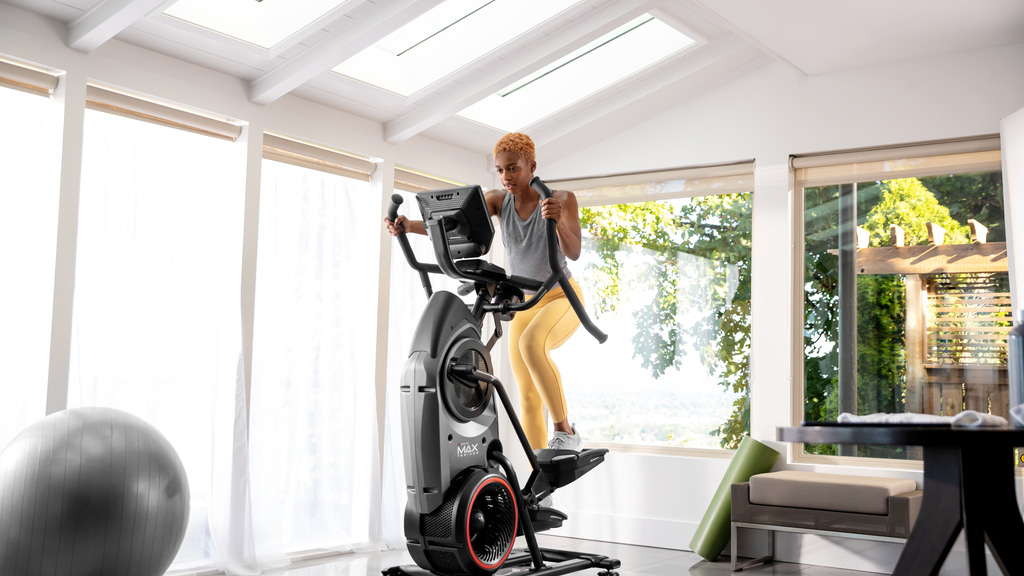Nautilus Inc. reported a significant hike in earnings for the three-month transition period ended March 31 as sales catapulted 120 percent.
As previously disclosed, the company changed its fiscal year from the twelve months beginning January 1 and ending December 31 to the twelve months beginning April 1 and ending March 31 in order to include the primary fitness season for exercise equipment, October to March, in the same fiscal year. In addition, the new fiscal year-end is better aligned with the fiscal year-end of the company’s retail partners. As a result, throughout this press release, the three-month period ended March 31, 2021, is referred to as the “Transition Period.”
Transition Period Highlights Compared To The Same Period Last Year
(3 Months Ended 3/31/2020)
- Net sales were $206.1 million, up 119.9 percent compared to $93.7 million for the same period last year and up 143.3 percent, excluding sales related to the Octane brand, which was sold in October 2020. Sales growth was driven primarily by continued demand for connected fitness bikes and treadmills, like the Bowflex VeloCore bike and T22 Treadmill, and robust sales of SelectTech®weights. Strong execution across the organization coupled with supply chain improvements that began last year drove record results.
- Gross profit was $79.1 million, up 122.2 percent compared to $35.6 million for the same period last year. Gross margin rates expanded by 40 basis points to 38.4 percent this year compared to 38.0 percent for the same period last year. Improved fixed costs leverage in the Retail segment offset margin pressures from inflationary price increases in commodities, FX, and continued elevated transportation costs driven by global logistics disruptions.
- Operating expenses increased by $3.2 million, or 8.9 percent, to $39.4 million primarily due to increased general and administrative costs.
- Operating income was $39.7 million, a $40.3 million improvement compared to a loss $0.6 million for the same period last year.
- EBITDA was $40.4 million compared to $2.3 million for the same period last year driven higher due to increased operating income.
- Income from continuing operations improved to $30.6 million, or $0.94 per diluted share, compared to $2.3 million, or $0.08 per diluted share, for the same period last year.
- Net income was $30.4 million, or $0.93 per diluted share, compared to $2.2 million, or $0.07 per diluted share, for the same period last year.
- The effective tax rate for the Transition Period was 19.9 percent.
Management Comments
“Our team delivered its second consecutive quarter of record-breaking results and posted the highest quarterly revenue in our company’s 35-year history. Net revenue of $206 million exceeded the high end of guidance, growing 120 percent versus last year, or 143 percent excluding the divested Octane business. Growth was strong across both segments, with Direct crossing $100 million for the first time and Retail delivering quarterly revenue second only to last quarter’s sales. In addition, our international business experienced 340 percent growth excluding Octane, and we generated $39.7 million of operating income in the quarter,” said Jim Barr, Nautilus Inc. CEO.
Barr continued, “As we enter this new fiscal year, our entire organization is focused on advancing North Star, our recently unveiled digital transformation plan. We are investing in increased marketing, expanded supply chain capabilities, and in continuing enhancements to our JRNY platform to meet our goal of 250,000 members by the end of fiscal year 2022. These investments combined with our new embedded digital offerings, deep innovation pipeline, and a strong balance sheet position us well to execute on our North Star Strategy and deliver sustainable long-term growth and profitability.”
Transition Period Segment Results Compared To First Calendar Quarter Of 2020 Direct Segment
- Direct delivered its best quarterly sales in segment history. Net sales were $101.5 million, up 115.4 percent compared to the same period last year;
- Strength product sales grew 178.6 percent, led by the popular SelectTech weights and Bowflex Home Gyms. Cardio sales increased 95.5 percent, driven by connected-fitness bikes and treadmills. The latest addition to the Max Trainer line, the M9, also contributed to the growth in the segment;
- Gross margin rate declined by 120 basis points to 50.3 percent, primarily driven by higher landed costs due to inflationary increases in commodity prices, FX, and elevated transportation costs; and
- Segment contribution income was $27.8 million or 27 percent, compared to $1.8 million or 4 percent for the same period last year. The $26.0 million improvement was primarily driven by higher gross profit and decreased media spend. Advertising expenses were $10.1 million compared to $13.2 million last year.
Retail Segment
- Retail segment sales of $103.4 million were the second-best quarterly sales in segment history, second only to last quarter’s $106.3 million;
- Net sales were up 126.8 percent from the same period last year, or 182.6 percent excluding sales related to the Octane brand. Retail segment sales outside the United States and Canada grew 200 percent or 340 percent, excluding Octane;
- Strength product sales grew by 243.5 percent, led by the Bowflex Home Gyms and popular SelectTech weights and benches. Cardio sales increased by 96.2 percent, driven by bikes, particularly the Schwinn IC3, IC4 and C7 connected-fitness bikes and treadmills;
- Gross margin rate expanded by 340 basis points to 26.0 percent, primarily driven by favorable customer mix and fixed costs leverage which more than offset higher product landed costs; and
- Segment contribution income was $20.3 million or 20 percent, compared to $2.4 million or 5 percent for the same period last year, primarily driven by higher gross profit.
Balance Sheet and Other Key Highlights As Of March 31, 2021
- Cash, cash equivalents, restricted cash and available-for-sale securities were $113.2 million, an increase of $86.8 million, compared to cash, cash equivalents and restricted cash of $26.5 million as of March 31, 2020;
- Debt was $13.6 million compared to $28.4 million as of March 31, 2020;
- $54.4 million was available for borrowing under the Wells Fargo Asset Based Lending Revolving Facility as of March 31, 2021;
- Account receivables were $88.7 million, compared to $34.3 million as of March 31, 2020. The increase in accounts receivable was primarily due to the timing of customer payments on increased sales;
- Inventory was $68.1 million, compared to $34.9 million as of March 31, 2020. The increase in inventory was primarily due to the surge in demand for home-fitness products, which depleted inventory to an uncharacteristically low level for the season last year;
- Trade payables were $98.9 million, compared to $34.2 million as of March 31, 2020. The increase in trade payables was primarily due to the timing of payments for inventory; and
- Capital expenditures totaled $2.7 million during the quarter ended March 31, 2021.
Forward-Looking Guidance | First Quarter Fiscal 2022
- Net sales are expected to grow between 40 percent and 50 percent versus the prior year or between 51 percent and 62 percent when excluding Octane Fitness which was sold in the calendar year 2020;
- Gross margins in the upcoming quarter will continue to be pressured by higher commodity prices, FX, and continued disruptions in global logistics. Additionally, extremely elevated prices for microchips, given the global scarcity and incremental investments in JRNY® and Supply Chain, will further pressure gross margins in the near term;
- The company plans to return to normalized levels of media spend, moving to about 7 percent of sales versus 2 percent of sales last year; and
- As a result, operating margins are expected to be between 6.5 percent and 8 percent.
Full Year Fiscal 2022
- Full-year capital expenditures are expected to be between $12 million and $14 million, with the majority earmarked for JRNY investments;
- The company is reiterating that JRNY members are expected to be 250,000 by the end of FY22;
- Update on Full-Year 2026 Financial Targets;
- Following the introduction of the company’s North Star strategy at its recent Investor Day, the company is providing the following updates to the Financial Targets presented; and
- The company is reiterating its target of approximately $1 billion in total revenue by the fiscal year 2026, which would represent a 5-year CAGR of 10 percent.
The company is also providing an update to its expectations for the long-term trajectory of operating margins.
By Fiscal Year 2026
- Operating margins are expected to be well above the previously disclosed minimum of 10 percent and closer to 15 percent;
- Operating margins for the existing equipment business are expected to have downward pressure given the return to normalized advertising spend and incremental costs related to a higher mix of products with embedded screens, partially offset by improvements in the cost structure;
- The rapidly growing digital subscription business, JRNY, is expected to have operating margins in the range of 20 percent-25 percent, and JRNY margins are expected to continue increasing as membership counts rise and fixed costs are leveraged beyond 2026, thereby contributing to the expansion of overall operating margins; and
- The company continues to expect the digital subscription business to represent approximately 20 percent of total company revenue and is targeting to have 2 million members by the year 2026.
Barr added, “Our recently unveiled long-term financial targets demonstrate the tremendous opportunity ahead for our business. In addition to targeting outsized revenue and digital subscription growth, there is a clear path forward to sustainable margin expansion. We previously said that we expect a floor of operating margins of at least 10 percent by fiscal year-end 2026. To further illustrate the upside of the transformation and increasing contribution of our rapidly growing JRNY® business, we have updated our margin targets to be closer to 15 percent with the expectation of further accretion beyond 2026. We are building a new operating model with a more balanced portfolio of products and services that will ultimately yield higher quality recurring revenue and long-term profitable growth.”
Photo courtesy Nautilus
















